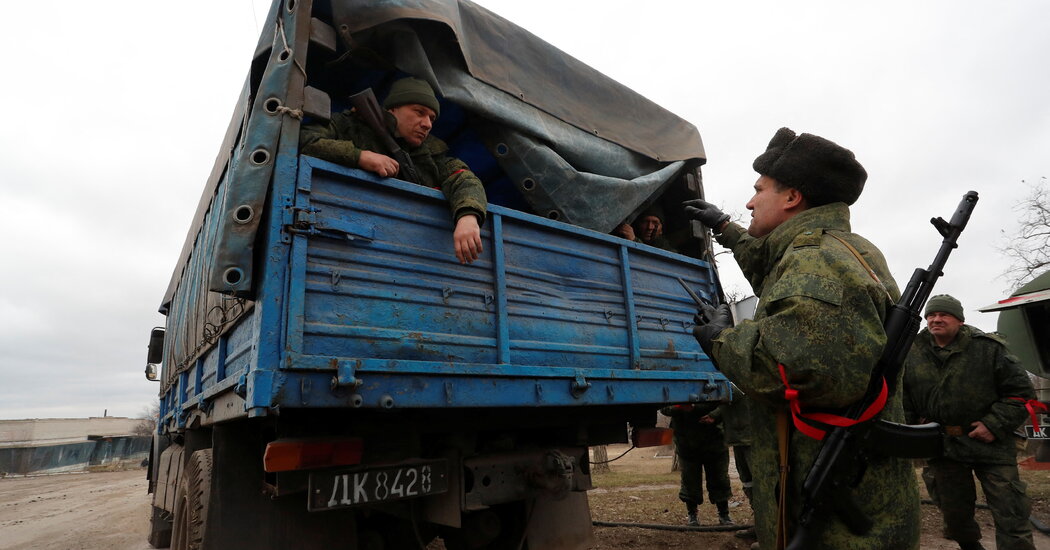
WASHINGTON — Plagued by poor morale as well as fuel and food shortages, some Russian troops in Ukraine have surrendered en masse or sabotaged their own vehicles to avoid fighting, a senior Pentagon official said on Tuesday.
Some entire Russian units have laid down their arms without a fight after confronting a surprisingly stiff Ukrainian defense, the official said. A significant number of the Russian troops are young conscripts who are poorly trained and ill-prepared for the all-out assault. And in some cases, Russian troops have deliberately punched holes in their vehicles’ gas tanks, presumably to avoid combat, the official said.
The Pentagon official declined to say how the military made these assessments — presumably a mosaic of intelligence including statements from captured Russian soldiers and communications intercepts — or how widespread these setbacks may be across the sprawling battlefield. The official spoke on the condition of anonymity to discuss operational developments.
But taken together, these factors may help explain why Russian forces, including an ominous 40-mile convoy of tanks and armored vehicles near Kyiv, Ukraine’s capital, have come to a near crawl in the past day or two, U.S. officials said.
Besides dealing with shortages of fuel, food and spare parts, the Pentagon official said, Russian commanders leading that armored column toward Kyiv may also be “regrouping and rethinking” their battle plans, making adjustments on the fly to gain momentum for what U.S. intelligence and military officials say is an inevitable push in the next several days to encircle and ultimately capture the capital.
“They have a lot of power available to them,” said the Pentagon official, adding that 80 percent of the more than 150,000 Russian troops amassed on Ukraine’s borders have now joined the fight.
But U.S. analysts have been struck by the “risk-averse behavior” of such a large force, the Pentagon official said. Russia launched an amphibious landing to seize Mariupol, a pivotal port city on the Sea of Azov, but landed forces around 40 miles from the city. That allowed the Russians extra time and space to mount an invasion, but also gave the city’s defenders time to prepare.
Russia’s vaunted air force has yet to gain air superiority over Ukraine, with Russian warplanes thwarted by Ukrainian fighter jets and a surprisingly resilient and potent array of air defenses, from shoulder-fired Stinger antiaircraft missiles to much larger surface-to-air weapons, the Pentagon official said.
For Russian forces coming out of Belarus, logistics problems have proved stubborn, a European official said on Tuesday.
Ahead of the invasion, U.S. and British intelligence had raised questions about the supply chain for the Russian troops in Belarus. During military exercises there, some of the soldiers were getting inadequate supplies of food and fuel, according to independent analysts. But American officials told allies that the Russians had fixed those problems by mid-February, which was one reason that American warnings about the invasion intensified in the middle of last month, according to the European official, who spoke on the condition of anonymity to discuss operational developments.
Russia-Ukraine War: Key Things to Know
But the challenges that Russian forces have faced show that their supply chain troubles have not been completely resolved, the European official said.
The logistics failures may help explain the presence of the long, slow-moving convoy of military equipment that is coming toward Kyiv, a tactical failure that is presenting a key target for the Ukrainian military, the European official said.
Russian officials, the European official said, expected to have secured air supremacy, at least around Kyiv. But the fact that Ukrainian air defense systems were still operating has put both Russian aircraft and the convoy of equipment in danger.




